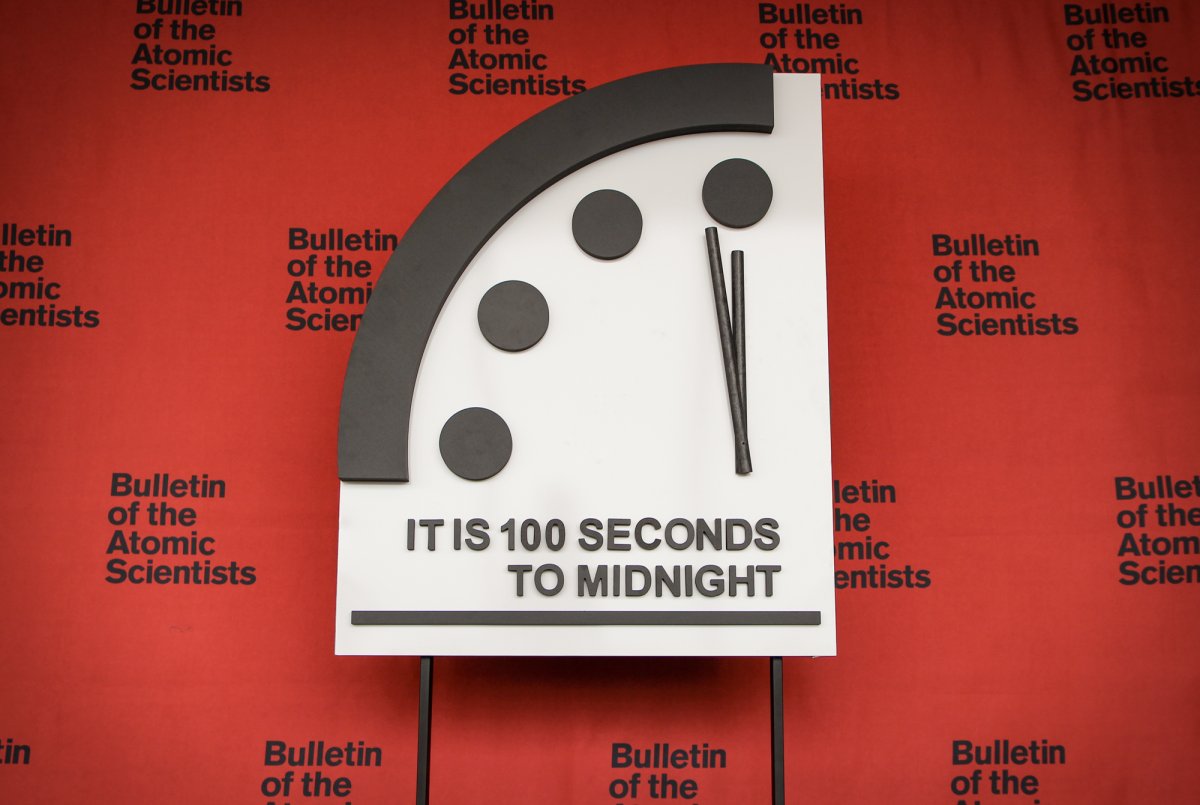The members of the Bulletin of the Atomic Scientists announced Thursday they had decided to leave the symbolic Doomsday Clock at the same place it sat last year and the year before: 100 seconds to midnight, the closest measure ever for the clock.
The time on the clock is meant to represent whether the events of the past year pushed the world closer to or farther away from destruction. The closer to midnight the clock is set shows the danger humanity supposedly faces.
Dr. Rachel Bronson, President and CEO of the Bulletin of the Atomic Scientists, opened the webinar announcing the Doomsday Clock's measurement. She said the nonprofit organization has been calculating the Doomsday Clock for 75 years to represent "the judgment of leading science and security experts about the threat to human existence with a focus on manmade threats, nuclear risk, climate change, and new disruptive technologies."
"The doomsday clock is holding steady at 100 seconds to midnight," Sharon Squassoni, co-chair of the Bulletin's Science and Security Board, added. "But steady is not good news. In fact, it reflects the judgment of the board that we are stuck in a perilous moment; one that brings neither stability nor security."

The Bulletin created the clock in 1947, two years after the organization was established by University of Chicago scientists who helped create the first nuclear weapons in the Manhattan Project. The organization's formation was a response to the first-ever atomic bombings launched by the U.S. at the end of World War II.
In addition to being a nonprofit organization, the Bulletin also published an eponymous academic journal. In 1991, following the end of the Cold War, the Bulletin placed the clock at its furthest-ever measurement of 17 minutes to midnight.
Dr. Raymond Raymond Pierrehumbert, a professor of physics at the University of Oxford, noted that the "[y]ear began with reasons for hope, in particular following the election of Joe Biden to the presidency of the United States," which he said represented "a return of an administration that views global warming as a real and serious problem requiring action."
Yet, Pierrehumbert said, little progress had been made by the world in regards to decarbonization. Other speakers spoke of various dangers, including threats posed from countries such as Russia and North Korea.
Dr. Asha M. George, Executive Director of the Bipartisan Commission on Biodefense, noted the pandemic remains a continued danger. "COVID-19 has revealed our national and global vulnerabilities to biological events, millions around the world continue to be infected by a disease caused by a virus we managed to ignore for 20 years," she said.
"The Doomsday Clock continues to hover dangerously, reminding us about how much work is needed to be done to ensure a safer and healthier planet. We must continue to push the hands of the clock away from midnight," Bronson said.
Uncommon Knowledge
Newsweek is committed to challenging conventional wisdom and finding connections in the search for common ground.
Newsweek is committed to challenging conventional wisdom and finding connections in the search for common ground.
About the writer
Jon Jackson is an Associate Editor at Newsweek based in New York. His focus is on reporting on the Ukraine ... Read more
To read how Newsweek uses AI as a newsroom tool, Click here.








